10 Most Sustainable Backpack Brands: The Conscious Consumer’s Guide
Affiliate Disclosure
Hey fellow impactful ninja ?
You may have noticed that Impactful Ninja is all about providing helpful information to make a positive impact on the world and society. And that we love to link back to where we found all the information for each of our posts.
Most of these links are informational-based for you to check out their primary sources with one click.
But some of these links are so-called "affiliate links" to products that we recommend.
Why do we add these product links?
First and foremost, because we believe that they add value to you. For example, when we wrote a post about the environmental impact of long showers, we came across an EPA recommendation to use WaterSense showerheads. So we linked to where you can find them. Or, for many of our posts, we also link to our favorite books on that topic so that you can get a much more holistic overview than one single blog post could provide.
And when there is an affiliate program for these products, we sign up for it. For example, as Amazon Associates, we earn from qualifying purchases.
What do these affiliate links mean for you?
First, and most importantly, we still only recommend products that we believe add value for you.
When you buy something through one of our affiliate links, we may earn a small commission - but at no additional costs to you.
And when you buy something through a link that is not an affiliate link, we won’t receive any commission but we’ll still be happy to have helped you.
What do these affiliate links mean for us?
When we find products that we believe add value to you and the seller has an affiliate program, we sign up for it.
When you buy something through one of our affiliate links, we may earn a small commission (at no extra costs to you).
And at this point in time, all money is reinvested in sharing the most helpful content with you. This includes all operating costs for running this site and the content creation itself.
What does this mean for me personally?
You may have noticed by the way Impactful Ninja is operated that money is not the driving factor behind it. It is a passion project of mine and I love to share helpful information with you to make a positive impact on the world and society. However, it's a project in that I invest a lot of time and also quite some money.
Eventually, my dream is to one day turn this passion project into my full-time job and provide even more helpful information. But that's still a long time to go.
Stay impactful,
Amid growing concerns about the textile industry’s environmental impact, there is pressure to find greener clothes and accessories for your wardrobe, from an everyday sweater to a backpack for seasonal adventures. Unfortunately, fashion greenwashing makes it harder for you and all other consumers to figure out which clothing brands offer the most eco-friendly garments and accessories. So, we had to ask: Which are the most sustainable backpack brands?
The most sustainable backpack brands are United by Blue, Sandqvist, and Patagonia, which prioritize low-impact materials, reduce waste, and strive for circularity. In addition, Sealand and Cotopaxi reduce carbon emissions and adhere to ethical manufacturing.
Whether you are searching for a daily backpack for work or a weatherproof pack for your next hike without negatively impacting the soil, the water, the animals, and other people, there is a brand for you. So, let’s keep reading to learn more about the most sustainable backpack brands and how they ensure sustainable, ethical practices.
Here’s How We Selected the 10 Most Sustainable Backpack Brands
Backpacks can be one of the higher-impact and less sustainable clothing accessories due to the conventional use of resource-intensive materials like animal-derived leather, synthetic fabrics made with virgin fossil fuels, or canvas based on traditional cotton.
“Sustainable: The ability to be maintained at a certain rate or level | Avoidance of the depletion of natural resources in order to maintain an ecological balance”
Oxford Dictionary
The brands on this list were chosen based on their commitment and actions to promote sustainable practices while reducing the environmental impacts of the textile industry.
They are transparent about their materials, processes, and workforce management within their supply chain.
Some brands focus their efforts on reducing waste and optimizing natural resources while others strive to reduce the carbon footprint of their clothes.
All of these brands share the commitment to reshape the textile industry toward a more sustainable and Earth-friendly sector.
These Are the 10 Most Sustainable Backpack Brands
Most Sustainable Backpack Brands
Overall, these backpack brands are sustainable. Yet, they take various approaches to reduce environmental impacts and uphold ethical standards. Let’s dive into each brand and find out more.
United by Blue: Backpack Brand That Designs Out Waste at Both Ends of The Life-Cycle

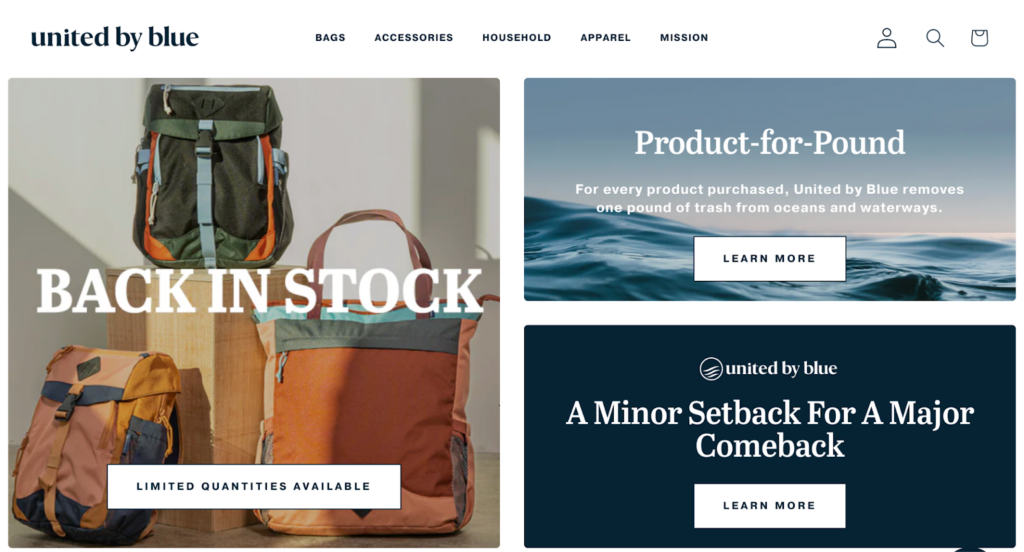
“Our hope is that through engaging cleanups, better business practices, and trash-cleaning products we can clean up the planet and the fashion industry one sustainable choice at a time. ”
United by Blue
🌎
How do they ensure their sustainability?
United by Blue ensures sustainability by designing out waste. In particular, they make durable products from sustainably sourced, low-impact materials. They also make them in factories with some of the highest social and environmental health certifications on a slow fashion timeline. Firstly, they source a high proportion of lower-impact materials. They prioritize biodegradable, regenerative fibers, recycled materials, and deadstock fabric. United by Blue’s products are also based on some of the most sustainable fabrics, including organic cotton (with GOTS and OCS certifications), recycled cotton (with GRS and OEKO-TEX® certifications), recycled wool (with RWS certification), recycled polyester (with GRS certification), recycled nylon (with GRS certification), and hemp (and SofthempTM). With high-impact fabrics like cashmere and viscose, the brand opts for the most sustainable options, including recycled cashmere and Lenzing’s EcoVero™ (a sustainably sourced viscose manufactured in a closed-loop system). Furthermore, United by Blue commits to having no single-use plastic within their packaging. Since 2022, all direct-to-consumer shipments have been packed in compostable poly bags, paper and cardboard boxes, and recyclable kraft tapes. Regarding their climate impact, the brand measures and reduces carbon emissions, especially in four key areas: shipments, production, energy, and stores. Their emission reduction measurements focus on reducing and consolidating shipments, transporting overseas products by boat, seeking renewable energy options, and prioritizing energy-efficient appliances, lighting, and materials in their physical stores and offices.
🌐
How do they ensure their ethics?
United by Blue binds all their suppliers with a Code of Conduct covering all of ILO’s Fundamental Principles and Rights at Work. They trace most of their supply chain and publicly share on their website their manufacturing partners, which are certified with some of the top sustainability standards (Bluesign®, Business Social Compliance Initiative Code of Conduct – BSCI, Global Organic Textile Standard, Social Accountability International – SA8000, and Worldwide Responsible Accredited Production – WRAP). Regarding animal welfare, they source wool certified by the Responsible Wool Standard, ensuring the ethical treatment of sheep in their supply chain.
🤝
Are they part of any giving-back programs?
United by Blue removes one pound of trash from oceans and waterways for every product purchased. They achieve this by organizing community, corporate, DIY, high-yield, and international cleanups.
🛍️
What is their product range?
- Best for: menswear, womenswear
- Product range: bags, wallets, blazers, beanies, scarves
- Price range: $$$
- Size range: S–XXL
Sandqvist: Design-Led Functional Backpacks Made Ethically

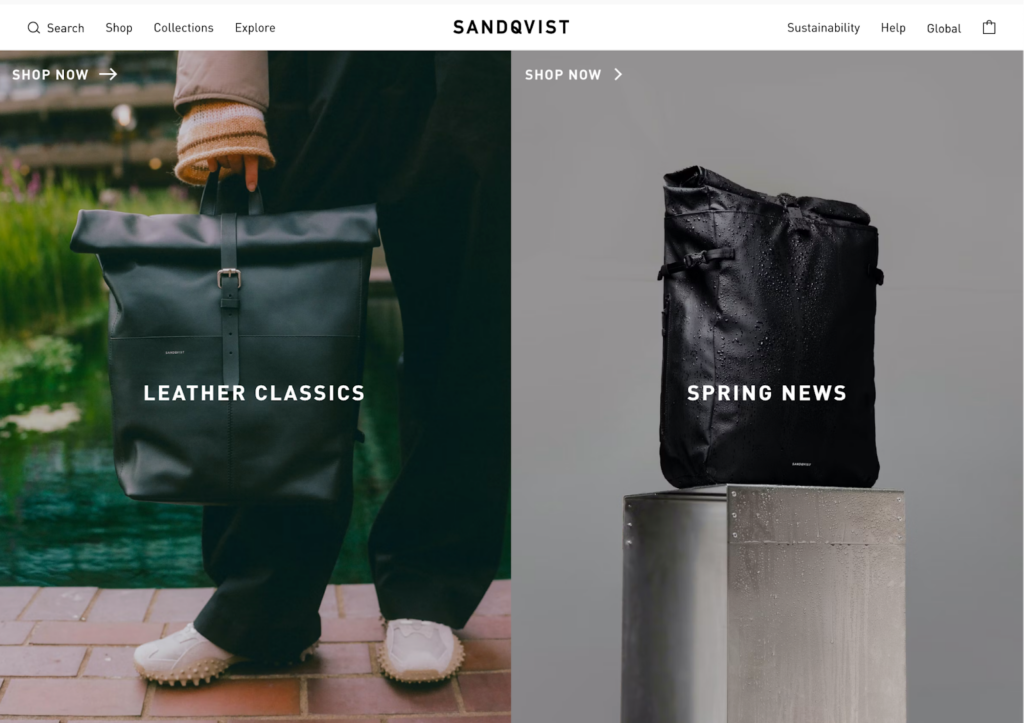
“We place focus on challenging the role of functionality in design and practicing both sustainability and respect for the environment at all times, without compromising aesthetics.”
Sandqvist
🌎
How do they ensure their sustainability?
Sandqvist ensures sustainability by strictly controlling their chemical usage, reducing carbon emissions, and lowering water impact. Firstly, all Sandqvist’s canvas products are constructed from organic cotton treated with substances and dyes approved for organic materials, avoiding harmful synthetic chemicals. Regarding leather—the conventional material for luxury bags—Sandqvist sources traceable and responsibly produced animal hides from Scandinavian cattle bred for dairy and meat production and has them processed at tanneries audited gold or silver by Leather Working Group (LWG), ensuring the strict management of chemicals used in tanning leather. Regarding their carbon emissions, in 2021, they cut their carbon emissions by 26% thanks to minimizing air freights of goods, moving to 3D sampling, and streamlining their ordering process. Sandqvist also uses recycled polyester and recycled nylon instead of virgin fossil-based synthetic fabrics, which have a much higher carbon footprint. Lastly, Sandqvist minimizes their water impact by strictly controlling the chemicals used throughout their supply chain, ensuring chemical management of their suppliers is in keeping with best practices and that water is conserved at all steps of production.
🌐
How do they ensure their ethics?
Sandqvist ensures their ethics by being transparent about their supply chain. They publicly share on their website their manufacturing partners, which are audited and certified with some of the top sustainability standards (Fair Wear Foundation, International Labour Organisation‘s (ILO) Better Works, BSCI, Social Accountability International – SA8000, SMETA). Sandqvist also has a Code of Conduct signed by most of their suppliers, which covers all of the ILO’s Fundamental Principles and Rights at Work.
🤝
Are they part of any giving-back programs?
Sandqvist is not known to be part of any giving-back programs.
🛍️
What is their product range?
- Best for: menswear, womenswear
- Product range: backpacks, briefcases, tote bags, shoulder bags, fanny packs, wallets, travel bags, laptop cases, travel accessories, bag accessories
- Price range: $$$
- Size range: n/a
Patagonia: Everyday Wear for Those Who Care
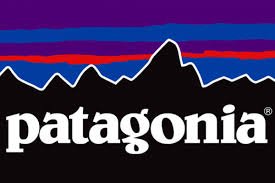

“Together, we can prioritize purpose over profit and protect this wondrous planet, our only home.”
Patagonia
🌎
How do they ensure their sustainability?
Patagonia puts sustainability at the center of their operation. They work to reduce, rather than simply offset, carbon emissions where it matters the most: in the supply chain and material manufacturing. They reduce their carbon footprint by removing high-impact virgin fossil-based fibers from their collections, using “Environmental Profit and Loss” to guide their production decision, and helping their suppliers to cut emissions. Patagonia’s fall 2023 collections are made up mostly of preferred materials (91% by fabric weight), including Regenerative Organic Certified fibers, hemp, man-made cellulose fibers, recycled cotton, and recycled polyester. On top of that, Patagonia’s Worn Wear Program encourages customers to repair and recycle their products, extending the textile lifecycle and reducing waste. Lastly, Patagonia is certified as a B Corporation and a Bluesign® brand.
🌐
How do they ensure their ethics?
Patagonia commits to fair trade practices. Through the partnership with Fair Trade USA, they currently produce 86% of their clothes in 20 Fair Trade Certified™ factories. Patagonia also pays a premium for every item produced in such factories, accumulating in a fund for workers to use in their chosen community projects, whether in healthcare or parent support or to withdraw as a cash bonus. Additionally, they have various social responsibility programs to prevent harm and create positive impacts on the lives of apparel workers in their supply chain. These include the Fair Labor Association, the Living Wage Program, the Migrant Workers Program, and the Responsible Purchasing Practices. Patagonia is also fully transparent about the locations of their facilities and suppliers.
🤝
Are they part of any giving-back programs?
Since 1985, Patagonia has pledged 1% of sales annually to environmental causes. They have also awarded over $89 million in cash and kind donations to domestic and international grassroots environmental groups, making a difference in their local communities. In 2022, the founder of Patagonia gave away his family’s ownership of the company to the newly created Patagonia Purpose Trust and the not-for-profit organization Holdfast Collective, ensuring that all future profits from the company are used to fight the climate and extinction crisis.
🛍️
What is their product range?
- Best for: kidswear, menswear, womenswear
- Product range: shirts, pants, jackets, blazers, hoodies, sweatshirts, T-shirts, shorts, plus-size
- Price range: $$$
- Size range: XXS–XXXL
Sealand: Weather Resistant Backpacks Made From Upcycled and Responsibly Sourced Materials
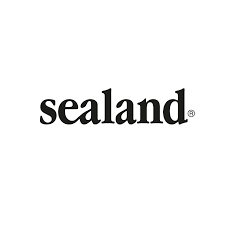

“Through environmentally efficient material selection, innovative design and product durability, we have sought to both slow down the rate of consumption and reduce the environmental damage caused by production.”
Sealand
🌎
How do they ensure their sustainability?
Sealand ensures sustainability by sourcing a high proportion of eco-friendly materials and achieving net zero carbon via reducing and offsetting emissions. Firstly, they lower their sourcing environmental impacts by combining three categories of low-impact textiles: upcycled fabrics, durable natural fabrics, and recycled fabrics (ECONYL® Regenerated Nylon). Specifically, they upcycle yacht sails, poly twill, spinnaker, and canvas. Sealand also uses hemp and CmiA-certified cotton (cultivated from rainwater-fed, non-GMO crops in sub-Saharan Africa). Regarding their carbon footprint, they partner with The Green House to measure their emissions. The calculations show that Sealand’s upcycled canvas and yacht sail bags are 99% more carbon efficient than a bag made from virgin canvas. Additionally, the brand has purchased carbon credits from Credible Carbon to offset all the emissions resulting from producing their gear. They also implement a carbon credit management system that tracks carbon emissions and credits.
🌐
How do they ensure their ethics?
Sealand traces most of their supply chain and visits their suppliers regularly. They state that they pay a living wage, which is, on average, 40% higher than the South African living wage.
🤝
Are they part of any giving-back programs?
Sealand pledges, in partnership with 1% for the Planet, to donate 1% of their sales to address key environmental challenges and disparities that exist in their socio-economic context. Specifically, they support Sentinel Ocean Alliance (SOA) to provide environmental education, ocean stewardship, and conservation in Sealand’s direct environment, Hout Bay. Additionally, they donate an upcycled bag to an aligned initiative for every online order over R1,500 ($80 USD).
🛍️
What is their product range?
- Best for: menswear, womenswear
- Product range: shoes, bags, wallets, belts, socks, accessories
- Price range: $$$
- Size range: n/a
Cotopaxi: An Outdoor Brand Working to Alleviate Global Poverty


“To prioritize sustainability for both people and planet, we consider every phase of a product’s lifecycle, including partnering with factories that treat workers right, sourcing sustainably minded materials, and making durable gear that lasts.”
Cotopaxi
🌎
How do they ensure their sustainability?
Cotopaxi ensures sustainability by designing their products and sales orders in a way that creates as little waste as possible. In 2022, 98% of their products contained repurposed, recycled, or responsible materials. Cotopaxi’s eco-preferred fibers include recycled fibers (cotton, wool, cashmere, polyester, nylon), organic fibers (cotton, linen, hemp, silk), TENCELTM Lyocell, and wool that is certified to the Responsible Wool Standard. They also prioritize products that are timeless and durable while offering customers pathways to repair, resell, and return their products, promoting slow-fashion principles to avoid overconsumption and unnecessary waste. As of 2022, Cotopaxi has eliminated all single-use plastic packaging from their entire supply chain. Additionally, Cotopaxi monitors, measures, and reports on their material environmental impacts, including all greenhouse gas (GHG) emissions, to reduce and responsibly offset their entire carbon footprint. Cotopaxi also works with Pachama and BEF to purchase carbon offsets from verified and vetted projects. Last but not least, they request water usage measurement and water reduction targets from their Tier 1 and Tier 2 suppliers in order to reduce their overall water impact.
🌐
How do they ensure their ethics?
Cotopaxi has a Code of Conduct covering all of the ILO’s Fundamental Principles and Rights at Work. They trace most of their supply chain and visit their suppliers regularly. Additionally, they ensure payment of a living wage in some of their supply chain.
🤝
Are they part of any giving-back programs?
Giving back is at the core of Cotopaxi’s operation. The Cotopaxi Foundation, founded in 2018, provides grants to nonprofits that help communities facing extreme poverty, including but not limited to organizations that provide healthcare, facilitate education, promote gender equality, and respond to humanitarian crises. Cotopaxi also became a member of 1% for the Planet in 2022, committing to donate 1% of sales to causes that support a healthier planet for all.
🛍️
What is their product range?
- Best for: menswear, womenswear, kidswear
- Product range: backpacks, travel bags, day bags, hip bags, bag accessories, jackets, vests, bottoms, T-shirts, hoodies, sweatshirts, activewear, accessories
- Price range: $$
- Size range: XS–3XL
VAUDE: Outdoor Gear Where Performance Meets Ecology

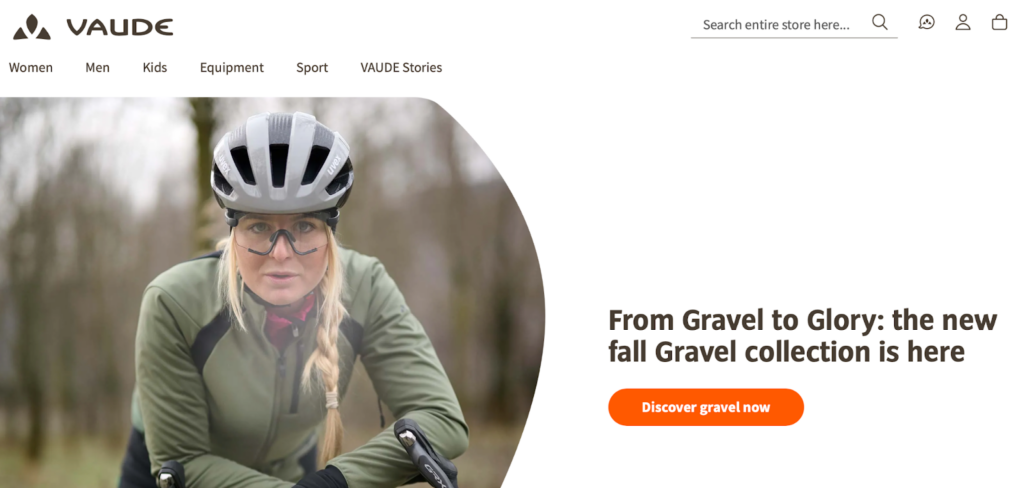
“We design with a focus on minimal material consumption, try to avoid waste and design products that are timeless, durable and repairable.”
VAUDE
🌎
How do they ensure their sustainability?
VAUDE prioritizes sustainability by creating a counterbalance to resource-consuming lifestyles. They achieve this by making durable and versatile products for life, minimizing waste during manufacturing, and enabling longer product lifespan with maintaining, repairing, donating, and upcycling guidance. On top of that, VAUDE opts for materials that combine technical performance and ecological responsibility. An example of this is their use of merino wool, a natural fiber suitable for a warm and water-repellent protective layer that is ideal for mountain sports. Meanwhile, they lower the impact of this fabric by adhering to the Responsible Wool Standard and the Global Organic Textile Standard for virgin organic wool and increasing the content of GRS-certified recycled wool in their collection. Furthermore, their products have been certified by Bluesign® and Green Button. Regarding their impact, the brand sets science-based climate goals to reduce global emissions as quickly as possible, aligning with the Paris Agreement’s 1.5 degrees in global warming, and is on track with their target as of October 2022, according to Science Based Targets (SBTi). They achieved that by measuring the total carbon footprint and implementing reduction measures in hotspots like material, energy, and transport. Since the beginning of 2022, VAUDE has been a carbon-neutral company, achieved through fully offsetting their global greenhouse gas emissions in the My Climate’s climate change mitigation project in Vietnam, their most important country of production.
🌐
How do they ensure their ethics?
VAUDE ensures ethical practices for both humans and animals involved in their operation. They work with the Fair Wear Foundation to monitor their final stage of production, ensuring safe working conditions and fair wages for factory workers. They also audit 100% of their producers in high-risk countries. Additionally, VAUDE has a basic policy to support diversity and inclusion in their direct operations and supply chain. Regarding animal rights, they follow the Responsible Wool Standard, appropriately addressing sheep’s welfare and the land they graze on.
🤝
Are they part of any giving-back programs?
VAUDE donates the products that can’t be repaired but are still perfectly functional to FairWertung. In 2021, VAUDE donated products with a merchandise value of approximately €339,000 (approximately $375,000 USD) to the network, which makes clothes affordable via charity shops or second-hand stores.
🛍️
What is their product range?
- Best for: sportswear (cycling, hiking, skiing) and urban outdoor clothes for women, men, and kids
- Product range: jackets, hoodies, sweaters, shirts, vests, pants, shorts, skirts, functional underwear
- Price range: $$$
- Size range: XS–XXXL
GROUNDTRUTH: Innovative Backpacks Made With 100% Recycled Plastics

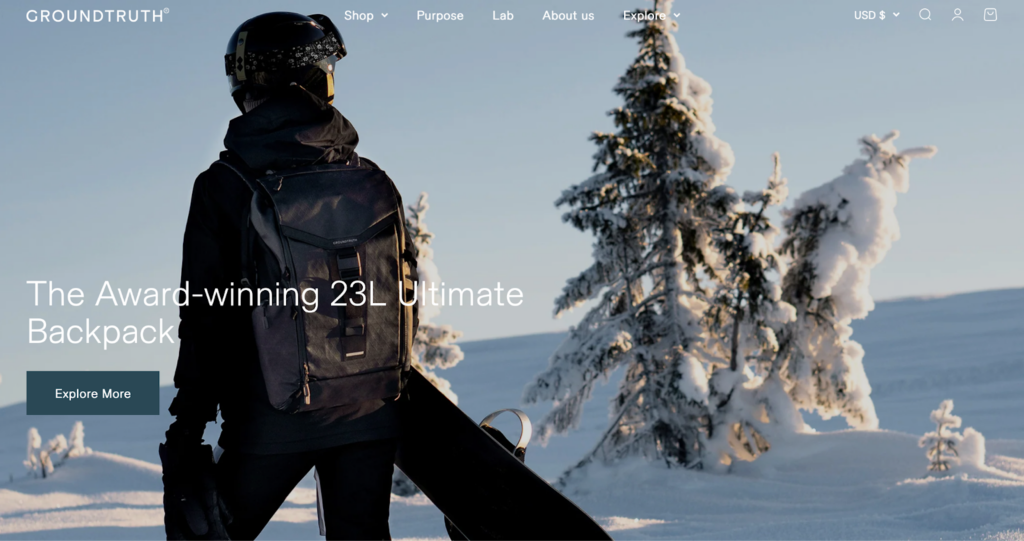
“We have hand built our ecosystem of partners who share both our values and vision for the future. Grounded in relationship building, we have forged strong partnerships for our bag manufacturing and our material development. We film and document every step to ensure we can be as transparent as possible.”
GROUNDTRUTH
🌎
How do they ensure their sustainability?
GROUNDTRUTH ensures sustainability by sourcing a high proportion of recycled fabrics to make their backpacks. They use recycled yarns with the Global Recycle Standard (GRS) certification made in Bluesign® facilities in Taiwan. For example, the exterior main body of their RIKR 10L Tote Pack is made with 100% rPET, while the lining is made with 100% GRS-certified recycled fishing net, and the padding is made with BLOOM’s algae-based foam, an eco replacement for traditional petroleum-based EVAs. GROUNDTRUTH also sources biodegradable packaging to further reduce waste and environmental impacts. Regarding their climate impact, the brand offsets their entire carbon footprint in Wildlife Works‘ Mai Ndombe project, located in the Democratic Republic of the Congo, which protects over 740,000 acres of the world’s second-largest rainforest. Furthermore, GROUNDTRUTH has partnered with Oco to develop a formula where they combine captured CO2 emissions within recycled polypropylene, one of the most abundant types of microplastics found in our oceans. They have used the formula to create a one-of-a-kind range of hardware, GT-OCO-CO2®, featured on all their bags and acting as a carbon sink. What’s more, GROUNDTRUTH creates products that are built to last with advanced textiles and the highest quality of manufacturing. Each new design is field-tested in the environment. For example, the RIKR range was tested in Antarctica by polar explorer and environmentalist Robert Swan OBE. Last but not least, GROUNDTRUTH’s backpacks come with a 10-year warranty.
🌐
How do they ensure their ethics?
GROUNDTRUTH traces most of their supply chain and visits their suppliers. As well, a high percentage of their manufacturing partners are certified by Bluesign®. Specifically, their backpacks are made by a family-run Bluesign®-certified manufacturer in Jakarta, which offers shorter hours, access to training, healthcare, education for the children of the textile workers, and gender pay equality.
🤝
Are they part of any giving-back programs?
GROUNDTRUTH is not known to be part of any giving-back program.
🛍️
What is their product range?
- Best for: womenswear, menswear
- Product range: backpacks, travel kits, accessories
- Price range: $$$
- Size range: n/a
The Level Collective: Organic Cotton Backpacks That Are Designed for Work and Play in the Wild

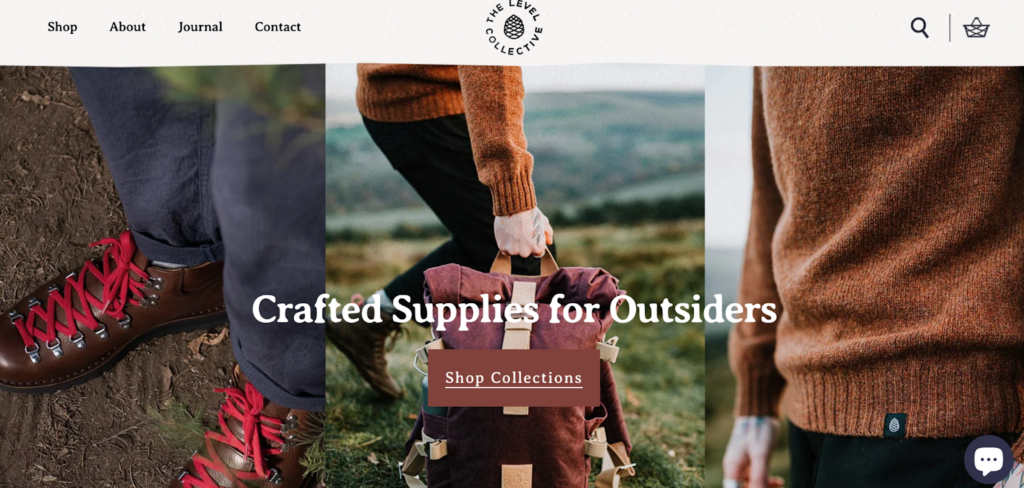
“We lead by example, putting people and planet before profit, and craft purposeful product as an expression of these values. Timeless supplies inspired by adventures in the seasons found outside, not those dictated by fashion.”
The Level Collective
🌎
How do they ensure their sustainability?
The Level Collective ensures sustainability by opting for low-impact varieties of natural fabrics for their backpacks. Specifically, they use organic cotton instead of conventional cotton for the outer shell, recycled wool instead of virgin wool (or fossil-based foam) for the padding, and chromium-free undyed leather instead of chemically tanned leather for the details. Additionally, The Level Collective designs their products for longevity to reduce waste along with the life-cycle impact. They also show their commitment by offering a lifetime of free repairs for their backpacks. To further reduce waste, the brand limits their production runs, uses minimal, recycled, and recyclable packaging, and buys back their worn-out products.
🌐
How do they ensure their ethics?
The Level Collective upholds their suppliers to a Supplier Code of Conduct, which covers four of the ILO’s Fundamental Principles and Rights at Work. They also trace most of their supply chain. Furthermore, most of their products, backpacks included, are manufactured in Britain and Europe under stringent labor laws. In addition, they source blank, off-the-shelf T-shirts and sweaters ethically made from GOTS-certified organic cotton in Bangladesh in Fair Wear Foundation-certified factories.
🤝
Are they part of any giving-back programs?
The Level Collective pledges 3% for People & Planet, donating 3% of their annual profits to charity partners who support vulnerable communities and protect our planet. Additionally, they opt for Mail Out, a social enterprise that specifically trains and employs adults with learning difficulties to pick, pack, and post their orders.
🛍️
What is their product range?
- Best for: womenswear, menswear
- Product range: backpacks, wool knitwear, shirts, jackets, T-shirts, sweaters, hats, socks, accessories, trainers, boots
- Price range: $$$
- Size range: XS–XL
pinqponq: Stylish and Functional Backpacks Made With Recycled Plastics

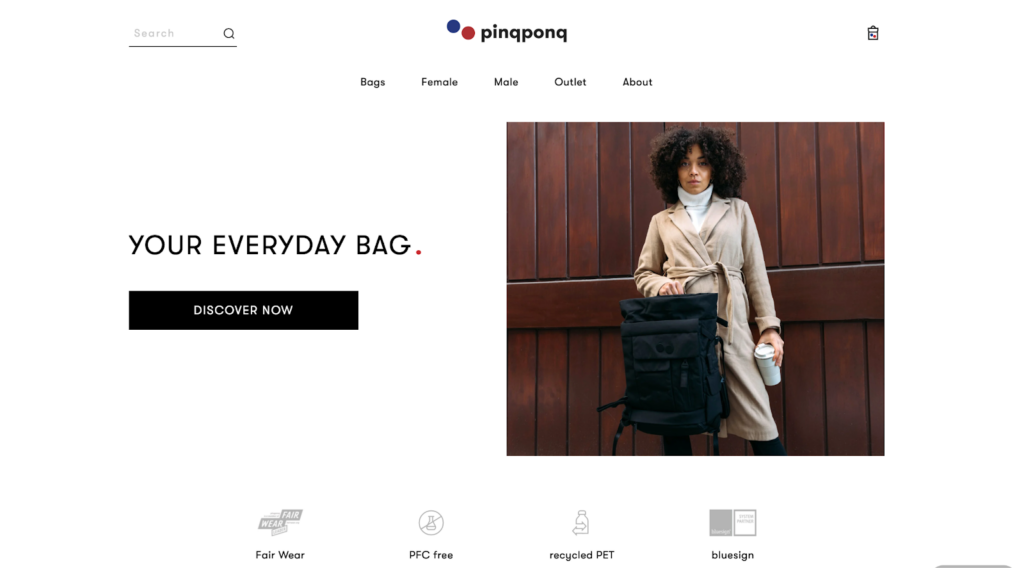
“pinqponq accepts its social and ecological responsibility, which is expressed through a resource-conserving manufacturing process, transparency about the delivery chain, and close relationships with its partners in Turkey, Vietnam and Myanmar.”
pinqponq
🌎
How do they ensure their sustainability?
pinqponq prioritizes sustainability by sourcing a high proportion of low-impact materials. Specifically, they use fabrics from 100% recycled PET bottles certified by the Global Recycling Standard and organic cotton certified by the Global Organic Textile Standard. Additionally, they use solution dyes that are water-free, resulting in less waste water and chemical discharge. Regarding weatherproof properties for their backpacks, pinqponq uses water-based PU protection (aka no virgin fossil fuels involved) and PFC-free impregnation to reduce the environmental impact. pinqponq is also a Bluesign® System Partner, meaning that they work together with Bluesign® to remove toxic chemicals from the supply chain.
🌐
How do they ensure their ethics?
pinqponq traces most of their supply chain and publicly shares information about their supply chain too. Their manufacturing partners are audited by some of the most credible organizations and sustainability standards, including Fair Wear Foundation and SEDEX Members Ethical Trade Audit (SMETA).
🤝
Are they part of any giving-back programs?
pinqponq is not known to be part of any giving-back programs.
🛍️
What is their product range?
- Best for: womenswear, menswear, kidswear
- Product range: everyday bags, large bags, small bags, hip bags, bike bags, sweaters, hoodies, T-shirts, long sleeves, fleece, jackets, pants, shorts, accessories
- Price range: $$
- Size range: XS–XL
Théla: Backpacks Handcrafted With Plastic Waste


“We handcraft premium, ethical fashion & lifestyle accessories with plastic waste, thus diverting it from filling landfills, polluting oceans and harming wildlife.”
Théla
🌎
How do they ensure their sustainability?
Théla ensures sustainability by sourcing low-impact waste as raw materials and adopting low-impact manufacturing processes. Specifically, they work with plastic waste—discarded plastic carry bags, garbage bags, food packaging wrappers, and large sheets used in agriculture—to handcraft circular fabrics. Further down the life-cycle in the manufacturing stage, the recycled plastic yarns are hand-woven with naturally dyed organic cotton. By producing fabrics by hand, they avoid the carbon emissions associated with operating weaving machines, lowering their climate impact. Additionally, Théla strives for no-waste manufacturing, as such, the plastic woven fabrics are custom-made to avoid cutting during the tailoring. Any waste generated during fabric making and cutting is donated to recycling initiatives.
🌐
How do they ensure their ethics?
Théla traces most of their supply chain and provides jobs for workers from disadvantaged communities. Regarding animal welfare, their entire collection is vegan, avoiding the unethical practices commonly found in animal farming.
🤝
Are they part of any giving-back programs?
Théla is not known to be part of any giving-back programs.
🛍️
What is their product range?
- Best for: womenswear
- Product range: bags, tops, bottoms, dresses, tees
- Price range: $$
- Size range: XS–L
Why Is It Important to Buy Products Made of More Sustainable Fabrics
It is important to buy products made of more sustainable fabrics because a sustainable textile industry has a lower carbon footprint, helps save natural resources, and is better for forests, animals, and humans.
Buying Sustainable Fabrics Reduces Your Carbon Footprint
The production of clothing and footwear is estimated to contribute 10% of global greenhouse gas emissions—more than all international flights and shipping combined. If the fashion industry were a country, it would be the fourth largest emitter of carbon dioxide.
One way to reduce the carbon footprint of the clothes you buy is to opt for sustainable fabrics. Sustainable fabrics, which are often made with natural or recycled fibers, have relatively low carbon footprints compared to petroleum-based fabrics. For example, organic cotton made in the US has a carbon footprint of 2.35 kg CO2 (per ton of spun fiber)—a quarter of polyester’s carbon footprint.
Buying Sustainable Fabrics Reduces Demand For Natural Resources and Waste Management
The textile industry uses water and land to grow cotton and other fibers. It is estimated that 79 billion cubic meters of water were used for the sector worldwide in 2015. For example, producing a single cotton T-shirt requires as much water as one person drinks for 2.5 years (2,700 liters of fresh water).
Worse yet, the textile economy is vastly more linear than circular: the largest amount of resources used in clothes ended up in landfill (instead of being recycled to remake clothes). According to a report by the Ellen MacArthur Foundation,
- Less than 3% of materials used in the textile economy in 2015 came from recycled sources.
- In other words, more than 97% of resources used in making clothes are newly extracted.
When clothing items are disposed of within a short period of time—under a year in the case of half of the fast fashion clothes—the natural systems that provide raw materials for fabrics don’t have enough time to recover and regenerate, which could lead to ecological breakdown.
Sustainable fabrics are made with less water and emissions while lasting longer:
- Because they are durable, you don’t need to buy new clothes too often.
- Thus, you help reduce the pressure to extract more resources for making new items.
Similarly, making and consuming sustainable fabrics made with recycled materials reduces the demand for virgin materials while helping tackle waste management.
Buying Sustainable Fabrics Encourages Sustainable Management of Forests
Sustainable natural fiber fabrics are made with raw materials from forests and plantations that are sustainably managed, such as complying with FSC standards.
When you buy sustainable natural fiber fabrics, you discourage unsustainable forestry practices like illegal logging. You can help reduce deforestation, biodiversity loss, and the effects of climate change.
Buying Sustainable Fabrics Encourages Fairer Treatment of Animals
The fashion industry is rife with animal mistreatment when it comes to making animal-based fabrics like wool or silk. Every year, billions of animals suffer and die for clothing and accessories.
Buying sustainable vegan alternatives can help to reduce the pressure on raising more and more animals to meet the demand for animal-based fabrics while sacrificing their well-being and lives.
Suppose you have to buy fabrics made with, for example, wool or silk; make sure you only choose brands committed to cruelty-free products. In that case, you help advocate better treatments for animals raised within the textile industry.
Using Sustainable Fabrics Encourages Fairer Treatment of Textile Workers
Recent statistics from UNICEF estimated as many as 170 million child laborers worldwide, many of whom were engaged in some form of work in the textile industry. They don’t get paid minimum wages and often work long hours.
When you buy sustainable fabrics from brands transparent about the working conditions at their factories, you discourage the use of child labor and help promote better working conditions for textile workers.
How Can You Generally Buy More Sustainable Fabrics
The key to sustainably buying fabrics is to check on relevant environmental and original certifications.
For natural fabrics:
- Global Organic Textile Standard (GOTS): A globally recognized certification system that ensures a certain threshold of organic content has been met. It covers manufacturing, packaging, labeling, transportation, and distribution (but not what happens in the fields where crops are grown).
- USDA Certified Biobased Product: The USDA BioPreferred® Certification is a voluntary certification offered by the United States Department of Agriculture. The certification identifies products made from plants or other renewable materials.
- Ecolabel: Ecolabel is the official European Union voluntary label recognized worldwide for certified products with a guaranteed, independently verified low environmental impact. The label requires high environmental standards throughout the entire life-cycle: from raw material extraction through production and distribution to disposal. It also encourages companies to develop innovative, durable, easy-to-repair, and recyclable products.
For natural fiber semi-natural/semi-synthetic fabrics:
- Forest Stewardship Council: An FSC certification ensures that the wood (or wood-like material) comes from responsibly managed forests that provide environmental, social, and economic benefits.
There are two types of FSC Certification:- FSC Forest Management Certification, with a focus on the origin of the wood—the forest.
- FSC Chain of Custody Certification, which focuses on the path from the forest to the customer’s home.
- Program for Endorsement of Forest Certification: PEFC’s approaches to sustainable forest management are in line with protecting the forests globally and locally and making the certificate work for everyone. Getting a PEFC certification is strict enough to ensure the sustainable management of a forest is socially just, ecologically sound, and economically viable but attainable not only by big but small forest owners.
For recycled fabrics:
- Recycled Claim Standard (RCS): The Textile Exchange RCS was originally developed as an international, voluntary standard that sets requirements for third-party certification of Recycled input and chain of custody.
- The Global Recycled Standard (GRS): The Global Recycled Standard (GRS) is an international, voluntary, full product standard that sets requirements for third-party certification of Recycled Content, chain of custody, social and environmental practices, and chemical restrictions. It can be used for any product with more than 20% recycled material.
For all types of fabrics:
- STeP by OEKO-TEX®: STeP by OEKO-TEX® is an independent certification system for brands, retailers, and manufacturers from the textile and leather industry. It communicates organizational environmental measures, including reducing carbon footprint and water usage.
- OEKO-TEX® Standard 100: OEKO-TEX® labels aim to ensure that products pose no risk to human health (i.e., containing banned chemicals).
Some certifications that are signaling brands’ efforts toward lowered environmental impacts and a circular economy are:
- B Corp Certification: The label B Corp is a certification reserved for for-profit companies. Certified holders are assessed on their social and environmental impacts.
- Cradle2Cradle certification: Cradle2Cradle provides a standardized approach to material circularity. It assesses whether products have been suitably designed and made with the circular economy in mind covering five critical categories: material health, material reuse, renewable energy and carbon management, water stewardship, and social fairness.
Final Thoughts
Backpacks can be one of the higher impact and less sustainable clothing accessories due to the conventional use of leather and/or virgin plastics to meet the performance demand of outdoor products. Thus, it is important to shop with ethics and sustainability in mind when choosing your next pack.
By purchasing new or pre-loved backpacks from brands that commit to sustainability, you support their mission to create a fairer and less harmful textile industry for all lives on Earth.
Here is the list (again) of the most sustainable backpack brands:
- United by Blue
- Sandqvist
- Patagonia
- Sealand
- Cotopaxi
- VAUDE
- GROUNDTRUTH
- The Level Collective
- pinqponq
- Théla
To make your use of your backpack even more sustainable, follow these steps:
- Buy second-hand, recycled, or upcycled backpacks made with low-impact materials.
- Keep your backpack as long as possible.
- At the end-of-life of your backpack, upcycle the materials to extend their usage and arrange for them to be recycled or properly disposed of.
Stay impactful,

Sources
- Impactful Ninja: How Sustainable Are Leather Fabrics? A Life-Cycle Analysis
- Impactful Ninja: How Sustainable Are Synthetic Fabrics? A Life-Cycle Analysis
- Impactful Ninja: How Sustainable Are Canvas Fabrics? A Life-Cycle Analysis
- Impactful Ninja: How Sustainable Are Cotton Fabrics? A Life-Cycle Analysis
- Science Direct: Life-cycle assessment (LCA)
- United by Blue: Home
- Sandqvist: Home
- Patagonia: Home
- Sealand: Home
- Cotopaxi: Home
- VAUDE: Home
- GROUNDTRUTH: Home
- The Level Collective: Home
- pinqponq: Home
- Théla: Home
- B Corporation: United by Blue
- United by Blue: Backpacks
- United by Blue: Our Story
- Good On You: Brand Directory | United by Blue
- United by Blue: Materials
- United by Blue: The SoftHemp™ Collection
- Impactful Ninja: How Sustainable Are Recycled Fabrics? A Life-Cycle Analysis
- Impactful Ninja: How Sustainable Are Organic Cotton Fabrics? A Life-Cycle Analysis
- Global Organic Textile Standard: Home
- Textile Exchange: Organic Content Standard
- Impactful Ninja: How Sustainable Are Recycled Cotton Fabrics? A Life-Cycle Analysis
- Textile Exchange: Global Recycle Standard
- OEKO-TEX: Home
- Impactful Ninja: How Sustainable Are Recycled Wool Fabrics? A Life-Cycle Analysis
- Textile Exchange: Responsible Wool Standard
- Impactful Ninja: How Sustainable Are Recycled Polyester Fabrics? A Life-Cycle Analysis
- Impactful Ninja: How Sustainable Are Recycled Nylon Fabrics? A Life-Cycle Analysis
- Impactful Ninja: How Sustainable Are Hemp Fabrics? A Life-Cycle Analysis
- Impactful Ninja: How Sustainable Are Cashmere Fabrics? A Life-Cycle Analysis
- Impactful Ninja: How Sustainable Are Viscose Fabrics? A Life-Cycle Analysis
- Lenzing: Home
- Impactful Ninja: How Sustainable Are Ecovero Fabrics? A Life-Cycle Analysis
- United by Blue: Plastic Free
- United by Blue: IMPACT REPORT
- United by Blue: Code of Conduct
- International Labour Organization: Fundamental Principles and Rights at Work
- United by Blue: Manufacturing
- Bluesign: Home
- Amfori: BSCI
- SA International – SA8000 Standard
- WRAP Compliance: Home
- Impactful Ninja: How Sustainable Are Wool Fabrics? A Life-Cycle Analysis
- United by Blue: Community Cleanups
- United by Blue: Corporate Cleanups
- United by Blue: DIY Cleanups
- United by Blue: High Yield Cleanups
- United by Blue: International Cleanups
- Sandqvist: Backpacks
- Sandqvist: Materials | Organic Cotton
- Impactful Ninja: How Sustainable Are Leather Fabrics? A Life-Cycle Analysis
- Sandqvist: Materials | Leather
- Good On You: Brand Directory | Sandqvist
- Leather Working Group: Home
- Sandqvist: Sustainability | Environment
- Sandqvist: Materials | Recycled Polyester
- Sandqvist: Materials | Recycled Nylon
- Impactful Ninja: How Sustainable Are Synthetic Fabrics? A Life-Cycle Analysis
- Sandqvist: Sustainability | Supply Chain
- Fair Wear Foundation: Home
- International Labour Organisation: Home
- Better Works: Home
- Amfori: BSCI
- SA International – SA8000 Standard
- SEDEX: SMETA
- Sandqvist: Code of Conduct
- International Labour Organization: Fundamental Principles and Rights at Work
- Patagonia: Backpacks: Travel and Daypacks
- Patagonia: The Climate Crisis Is Our Business
- Patagonia: The Climate Crisis Is Our Business | No More Virgin Petroleum Fibers by 2025
- Patagonia: The Climate Crisis Is Our Business | Is Each Product Worth the Environmental Cost?
- Patagonia: The Climate Crisis Is Our Business | Help Suppliers Cut Emissions
- Patagonia: Environmental Responsibility
- Patagonia: Regenerative Organic Certified fibers
- Patagonia: Hemp
- Patagonia: Man-made Cellulose Fibers
- Patagonia: Recycled Cotton
- Patagonia: Recycled Polyester
- Patagonia: WORN WEAR
- B Corporation: Patagonia
- Bluesign: Home
- Fair Trade: Home
- FAIR TRADE CERTIFIED: Improving Lives, Protecting the Planet.
- Patagonia: Social Responsibility
- Patagonia: Fair Trade
- Patagonia: Fair Labor Association
- Patagonia: Living Wage Program
- Patagonia: Migrant Workers Program
- Patagonia: Responsible Purchasing Practices
- Patagonia: Where We Do Business
- Patagonia: 1% for the Planet
- Forbes: Yvon Chouinard And The Patagonia Purpose Trust— What Is It And Will It Work?
- Fast Company: Patagonia uses capitalism to save the planet with the Holdfast Collective
- The New York Times: Patagonia Founder Gives Away the Company to Fight Climate Change
- Sealand: Backpacks
- Good On You: Brand Directory | Sealand
- Sealand: Responsibility
- Sealand: Materials
- Impactful Ninja: How Sustainable Are Natural Fabrics? A Life-Cycle Analysis
- Impactful Ninja: How Sustainable Are Recycled Fabrics? A Life-Cycle Analysis
- Impactful Ninja: How Sustainable Are ECONYL Fabrics? A Life-Cycle Analysis
- Impactful Ninja: How Sustainable Are Canvas Fabrics? A Life-Cycle Analysis
- Impactful Ninja: How Sustainable Are Hemp Fabrics? A Life-Cycle Analysis
- Cotton made in Africa: Home
- Credible Carbon: Home
- One Percent For The Planet: Home
- Sentinel Ocean Alliance: Home
- B Corporation: Cotopaxi
- Cotopaxi: Backpacks
- Cotopaxi: 2022 Impact Report
- Impactful Ninja: How Sustainable Are Recycled Fabrics? A Life-Cycle Analysis
- Impactful Ninja: How Sustainable Are Cotton Fabrics? A Life-Cycle Analysis
- Impactful Ninja: How Sustainable Are Wool Fabrics? A Life-Cycle Analysis
- Impactful Ninja: How Sustainable Are Cashmere Fabrics? A Life-Cycle Analysis
- Impactful Ninja: How Sustainable Are Polyester Fabrics? A Life-Cycle Analysis
- Impactful Ninja: How Sustainable Are Nylon Fabrics? A Life-Cycle Analysis
- Impactful Ninja: How Sustainable Are Organic Fabrics? A Life-Cycle Analysis
- Impactful Ninja: How Sustainable Are Linen Fabrics? A Life-Cycle Analysis
- Impactful Ninja: How Sustainable Are Hemp Fabrics? A Life-Cycle Analysis
- Impactful Ninja: How Sustainable Are Silk Fabrics? A Life-Cycle Analysis
- Impactful Ninja: How Sustainable Are TENCELTM Fabrics? A Life-Cycle Analysis
- Textile Exchange: Responsible Wool Standard
- Cotopaxi: Code of Conduct
- Good On You: Brand Directory | Cotopaxi
- International Labour Organization: Fundamental Principles and Rights at Work
- Cotopaxi: Our Impact
- Range of Motion Project: Home
- Fundación Escuela Nueva Volvamos a la Gente (FEN): Home
- Poverty Action Lab: Home
- International Rescue Committee: Home
- One Percent For The Planet: Home
- VAUDE: Backpacks
- VAUDE: CSR Report | Produce Philosophy
- Good On You: Brand Directory | VAUDE
- VAUDE: CSR Report | Don’t wash any more than necessary
- VAUDE: CSR Report | Repair Don’t Replace
- VAUDE: CSR Report | Second-hand and donations
- VAUDE: CSR Report | Upcycling
- VAUDE: CSR Report | Material Policy
- Impactful Ninja: How Sustainable Are Merino Wool Fabrics? A Life-Cycle Analysis
- VAUDE: CSR Report | Wool
- Bluesign: Home
- Green Button: Home
- Science Based Targets (SBTi): Home
- VAUDE: CSR Report | Climate Footprint
- VAUDE: CSR Report | Climate-Neutral Business
- VAUDE: CSR Report | Our Producers
- FairWertung: Home
- GROUNDTRUTH: Sustainable Backpacks
- Good On You: Brand Directory | GROUNDTRUTH
- Impactful Ninja: How Sustainable Are Recycled Fabrics? A Life-Cycle Analysis
- Textile Exchange: Global Recycle Standard
- Bluesign: Home
- GROUNDTRUTH: RIKR 10L Tote Pack
- BLOOM Materials: Products
- GROUNDTRUTH: Purpose
- Wildlife Works: Home
- GROUNDTRUTH: Patent-Pending Technology GT-OCO-CO₂®
- GROUNDTRUTH: RIKR range
- GROUNDTRUTH: Warranty
- The Level Collective: British Made, Waxed Canvas Backpacks
- Impactful Ninja: How Sustainable Are Natural Fabrics? A Life-Cycle Analysis
- The Level Collective: Why Organic Cotton?
- Impactful Ninja: How Sustainable Are Cotton Fabrics? A Life-Cycle Analysis
- Impactful Ninja: How Sustainable Are Recycled Wool Fabrics? A Life-Cycle Analysis
- Impactful Ninja: How Sustainable Are Wool Fabrics? A Life-Cycle Analysis
- The Level Collective: Our Backpack Ingredients
- Impactful Ninja: How Sustainable Are Leather Fabrics? A Life-Cycle Analysis
- The Level Collective: Warranty & Repair
- Good On You: Brand Directory | The Level Collective
- The Level Collective: 10 things that make us different
- The Level Collective: Buy Back Project
- The Level Collective: Code of Conduct
- International Labour Organization: Fundamental Principles and Rights at Work
- Global Organic Textile Standard (GOTS): Home
- Impactful Ninja: How Sustainable Are Organic Cotton Fabrics? A Life-Cycle Analysis
- Fair Wear Foundation: Home
- The Level Collective: 3% for People & Planet
- Mail Out: Home
- Good On You: Brand Directory | pinqponq
- pinqponq: PET Recycled
- Textile Exchange: Global Recycled Standard
- Impactful Ninja: How Sustainable Are Organic Cotton Fabrics? A Life-Cycle Analysis
- Global Organic Textile Standard (GOTS): Home
- pinqponq: Solution dyes
- pinqponq: Water-based PU
- pinqponq: PFC-free impregnation
- Bluesign: Home
- pinqponq: Social Report 2022/23
- Fair Wear Foundation: Home
- SEDEX: SMETA
- Théla: Sustainability | Our Process
- Impactful Ninja: How Sustainable Are Organic Cotton Fabrics? A Life-Cycle Analysis
- Good On You: Brand Directory | Théla
- Théla: Our Circular Practices |A circular product with a sustainable story.
- Impactful Ninja: How Sustainable Are Natural Fabrics? A Life-Cycle Analysis
- Global Organic Textile Standard (GOTS): Home
- BioPreferred: WHAT IS THE BIOPREFERRED PROGRAM?
- European Commission: Environment | EU Ecolabel
- Impactful Ninja: How Sustainable Are Semi-Natural/Semi-Synthetic Fabrics? A Life-Cycle Analysis
- Forest Stewardship Council
- FSC Forest Management Certification
- FSC Chain of Custody Certification
- Textile Exchange: The RCS and GRS are designed to boost the use of recycled materials
- Program for Endorsement of Forest Certification
- Impactful Ninja: How Sustainable Are Recycled Fabrics? A Life-Cycle Analysis
- Textile Exchange: Recycled Claim Standard
- Textile Exchange: Global Recycled Standard
- OEKO-TEX: Certification according to STeP by OEKO-TEX®
- OEKO-TEX: OEKO-TEX® Standard 100
- B Corp Certification: Home
- C2CCertified: Home

 ® Fabrics? A Life-Cycle Analysis" itemprop="image" class="left" />
® Fabrics? A Life-Cycle Analysis" itemprop="image" class="left" />


